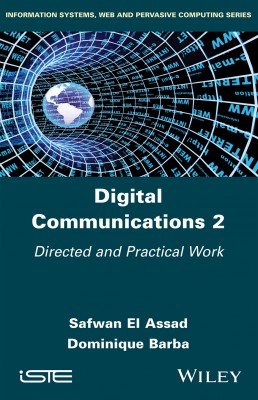
The second volume of these books on digital communications deals with knowledge and skills acquisition.
Digital Communications 2 is structured into two parts; the first deals with the tutorial aspect. This is an ordered set of thirty-three problems covering the contents of Digital Communications 1: the theory of information (15 problems), digital baseband transmission (11 problems) and digital carrier modulation (7 problems). All the problems are autonomous and structured as complete statements. These are followed by explicit solutions, which are accessible to the majority of the targeted learners, and were chosen to offer a wide variety of difficulty levels.
The second part of this book offers a set of 5 practical works. They range from basic measurements on transmission cables to the design of modems using software simulations and the effective use of electronic modules and basic functions in the construction of communication systems.
Part 1. Tutorials
1. Theory of Information: Problems 1 to 15.
2. Baseband Digital Transmission: Problems 16 to 26.
3. Digital Transmissions with Carrier Modulation: Problems 27 to 33.
Part 2. Practical Works
4. Study of the Transmission of Digital Information on Two-wire Cables.
5. Study of Baseband Digital Transmission Systems for the Transmission of Analog Signals (Transmitter and Receiver).
6. Study of On-line Codes for Baseband Modulation and Carrier Modulation.
7. Study of a QPSK Modem Under MATLAB, Simulink, Communications and DSP.
8. Study of a Coding and Decoding System by Cyclic Codes.
Safwan El Assad is Associate Professor (HDR) at Polytech Nantes, France. From 1988 to 2005, his research activities concerned radar imagery and digital communications. With a background in radar imagery and digital communications, today his research largely focuses on chaos-based cryptography.
Dominique Barba is a retired Professor from Polytech Nantes. His research has focused for over 45 years on the processing of still and moving images (improvement, compression), their analysis, human and artificial vision, as well as digital communications (compression).